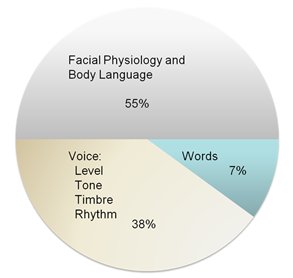Who among us, whether we work in a large shop or small, email coworkers to address a work issue when you could have just walked down the hall to speak with the person? Or how about when you have a chance to work with a board member or volunteer – do you opt for a phone call instead of a face-to-face meeting? While the conveniences of modern life are easy to default to because it is presumed to be more time effective for both parties, I want to raise the question if that is indeed true?
Improve Outcomes
Studies make clear how important it is for existing colleagues and potential collaborators or donors to spend time together in the same space. According to research conducted by the MIT’s Human Dynamics Lab, face-to-face requests of any sort are 34 times more effective than those sent by email, and that a physical handshake promotes cooperation and influences negotiation outcomes for the better.
It is not unusual for people to touch one another when people meet face-to-face. It usually involves a handshake, the holding of a door, providing water or touching an arm at the end of a meeting. In addition to vision, hearing and smell – touch is a very powerful sense.
An experiment done by researchers at the University of Chicago and Harvard found that negotiators who shook hands were more open and honest, and reached better outcomes. Shaking hands causes the centers of the brain associated with rewards to activate. You are literally conveying warmth and the potential for benefit.
The pie illustration shows the relative impact on the complexities of communication and of all we bring to a face-to-face meeting.

Albert Mehrabian, a major figure in the study of non-verbal communication, Silent Messages.
Researchers from MIT’s Human Dynamics Laboratory have further revealed that face-to-face meetings allow meeting participants to come up with more ideas and become more capable as a group compared to virtual meetings. “The deep, often unconscious elements of in-person interaction are more important than language. Language turns out to matter little.” according to MIT’s Dr. Pentland. His finding is “usually we can completely ignore the content of discussions and use only the visible social signals to predict the outcome of a negotiation or a sales pitch, the quality of group decision making, and the roles people assume within the group. What matters are the many ways we connect only when we’re physically together.”
Meeting in person allows for increased eye contact, which builds increased trust and encourages group members to confide in and co-create with their group. Research published in the International Journal of Organizational Design and Engineering found: “The more team members directly interact with each other face-to-face, and the more they trust other team members, the more creative and of higher quality the result of their teamwork is.”
These little interactions are often unconscious and are at the base of building rapport but can only happen with face-to-face interactions. People’s pupils dilate when they are happy or excited and constrict when they are sad. When you interact with someone and have eye contact (as often as possible), you absorb their emotional state at the time and respond accordingly… often unconsciously. When you feel the person you are meeting with may be guarded or unreceptive to you or enthusiastic and excited, you can only get to a confident read about their position when you are sitting with them.
Synchronize Your Brains
Researchers from Beijing Normal University published in The Journal of Neuroscience the point that face-to-face communication differs from other forms of communication in two key ways:
1. Face-to-face communication involves the integration of “multimodal sensory information,” such as nonverbal cues (facial expressions, gestures, etc.)
2. Face-to-face communication involves more continuous turn-taking behaviors between partners, which has been shown to play a pivotal role in social interactions and reflects the level of involvement of a person in the communication
These factors are critical to effective communication and may even play a role in helping to synchronize your brain with others in your conversation. In fact, research has shown a significant increase in the neural synchronization between the brains of two partners during face-to-face, but not during other types of conversation.
Less is More
In addition, the quality of the communication was found to be a more important contributor to neural synchronization than the quantity of communication. This suggests that even infrequent in-person meetings may have more of an impact on relationship quality than frequent digital meetings.
This is something to be particularly mindful of when building relationships with donors. It has been my experience that the quality of my interactions with people has enduring resonance. While I may not see some people very often, when we do get together, we picked up where we left off as do the feelings we had for each other.
Your takes:
1. Regarding donor cultivation and relations, focus on quality encounters vs. the number of encounters.
2. Encourage more team building meetings where everyone is focused on creating the best strategies to address common opportunities and challenges.
3. Try to emphasize more personal interactions instead of phone and email interactions with colleagues and stakeholders.


